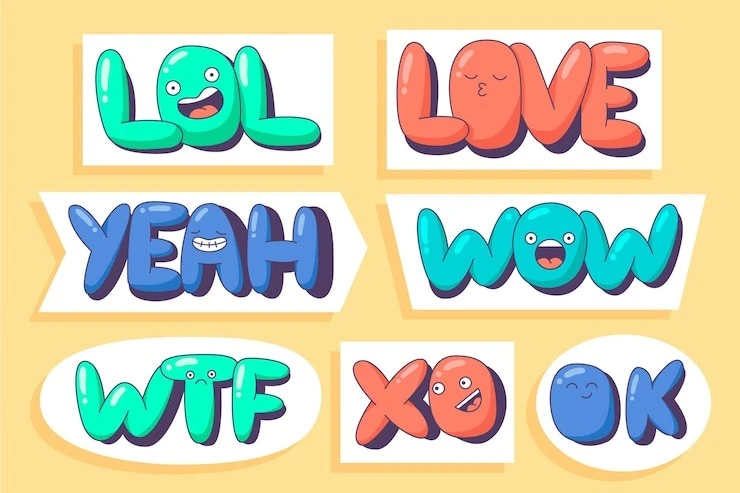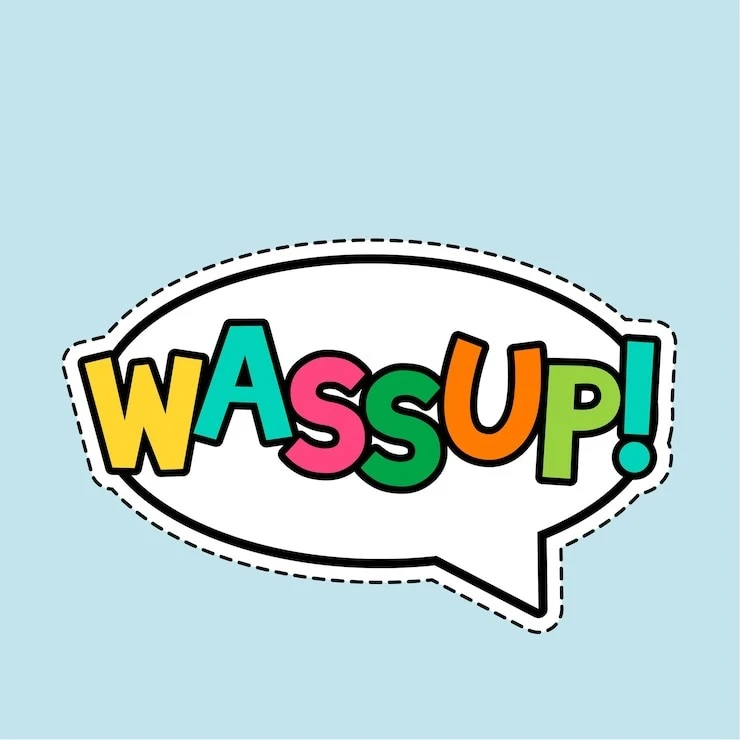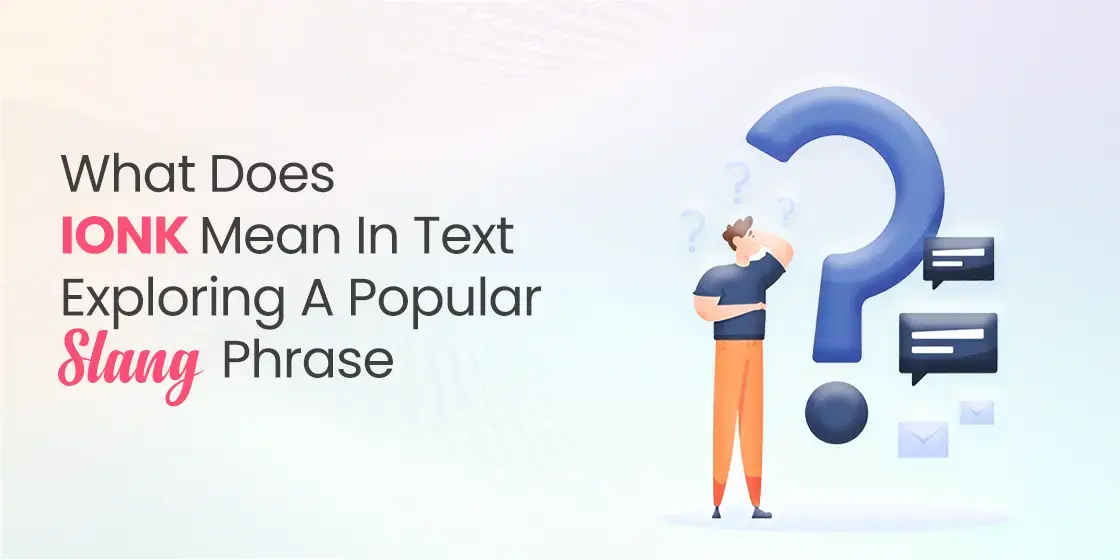Table of Content
Discover What Does IONK Mean in Text and When to Use It Properly
Today, in the fast-paced realms of texting and social media, efficiency in communication often reigns supreme. This has led to the indiscriminate sharing of acronyms, abbreviations, and contractions that allow users to convey their messages quickly and concisely.
Among these linguistic shortcuts, slang terms and informal phrases frequently emerge and gain popularity, such as the term AFAIK or IONK. This result in these messages sometimes leaving those unfamiliar with the latest slang feeling a bit lost in translation. For example, how many of you know what does IONK mean in text messages?
Understanding the meaning and context of such slang contractions and terms is crucial for effective communication in the digital age, bridging the generational gaps in online interactions.
In this article, we will explore the meaning of the popular slang term “IONK” in text messaging and other forms of digital communication. We will study the nature of contractions and their role in the English language, highlighting their inherent efficiency from the perspective of professional web copywriting services.
Let’s begin.
What is a Contraction and Why Are They Used in the English Language?

A contraction is a shortened form of one or more words in a phrase where the letters or sounds are omitted. The omitted letters are typically replaced by an apostrophe to indicate the missing elements, or sometimes nothing.
Contractions are a common feature of spoken and informal written English, serving primarily to make language flow more smoothly and naturally. They contribute to a more conversational and less formal tone, reflecting the way people often speak in everyday interactions.
The primary reason for the use of contractions is efficiency. By combining words and omitting unnecessary letters or sounds, speakers and writers can convey the same meaning with fewer syllables and characters, such as FYI. This is particularly valuable in spoken language, where speed and ease of articulation are important.
In written language, especially in informal contexts like personal letters, emails, and text messages, contractions contribute to a more relaxed and approachable style. They mimic the natural rhythm and style of spoken language, making the writing feel more personal and less stiff. This is also an inherent part of modern rules of copywriting to help brands connect with their audience better.
The use of contractions is deeply ingrained in the English language, showing its evolution towards ease of expression in informal settings. Understanding these contractions is fundamental to comprehending both spoken and written English and recognizing the nuances of formality in different communication contexts.
Rising Popularity of Contractions Among Younger Gens in Today’s Social Media World

The modern digital age, particularly since the advent of social media and instant messaging, has significantly influenced the way younger generations communicate. This has led to a surge in the popularity and evolution of shortcuts, including contractions and slang.
The character limits often imposed by platforms like Twitter (now X) in their early days, and the general desire for rapid and efficient communication in text-based interactions, have fostered a culture of informality. This has created a fertile ground for the creation and widespread adoption of new acronyms, abbreviations, and slang terms that streamline communication.
Younger generations, often digital natives who have grown up immersed in this environment, have become particularly adept at using and understanding this evolving digital vernacular. They frequently employ contractions not just for efficiency but also as a marker of belonging and a way to convey a casual and relatable tone.
Social media platforms serve as powerful incubators for new slang and abbreviations, with trends often emerging and spreading rapidly through viral content and peer-to-peer communication. A slang term or abbreviation might gain popularity through its association with a particular meme on social media, adding layers of meaning and context beyond its literal definition.
This dynamic interplay between text, visuals, and audio further accelerates the evolution and adoption of digital slang among younger generations, making it a constantly shifting and often challenging landscape for those less immersed in these online spaces. Understanding this cultural context is crucial for interpreting the meaning and intent behind digital communication, including the use of terms like “IONK,” making it important for social media copywriting.
Exploring What Does IONK Mean in Text and Other Forms of Digital Communications

In text messaging and other forms of digital communication, the acronym “IONK” has emerged as a popular slang phrase, particularly among younger users. Now, you might be asking, “What does IONK mean in text messaging?” Well, while it might not be immediately obvious to those unfamiliar with contemporary internet slang, “IONK” stands for “I don’t know.” This abbreviation serves as a concise and quick way to express a lack of knowledge or uncertainty in a digital conversation.
The appeal of “IONK,” like many other digital slang terms for Gen Z and Alpha, lies in its simplicity and its ability to convey a common sentiment quickly. In situations where a simple acknowledgment of not knowing is required, typing “IONK” is significantly faster than typing out the full phrase “I don’t know.”
This efficiency is highly valued in text-based communication, where users often prioritize speed and conciseness. Furthermore, the use of such acronyms can contribute to a sense of camaraderie and in-group belonging among those who are familiar with the slang, acting as a form of digital shorthand understood within specific online communities.
The context in which “IONK” is used is typically informal and casual. You might encounter it in text messages between friends, on social media comments, or in online chats. It is generally used in response to a question or a statement where the user is indicating their lack of information or understanding. For example, if someone asks, “What time does the movie start?” a common response might be “IONK, maybe check the website.”
Similarly, if someone makes a statement like, “This new update is confusing,” another user might reply with “IONK what they were thinking.” Understanding this typical usage context is key to correctly interpreting the meaning of “IONK” in digital conversations. While its meaning is relatively straightforward, familiarity with such slang terms is essential for understanding the nuances of online communication, especially when interacting with younger generations.
Understanding Slang and When It Is Appropriate To Use It in Communication

Slang is a type of language consisting of words and phrases that are regarded as very informal, are more common in speech than writing, and are typically restricted to a particular context or group of people. It often evolves rapidly and can be specific to age groups, social circles, geographic locations, or online communities. The primary purpose of slang is often to create a sense of informality, establish group identity, or provide a fresh and sometimes humorous way of expressing common ideas.
The appropriateness of using slang in communication depends heavily on the context, the audience, and the relationship between the communicators. In casual conversations with friends or peers who are familiar with the slang being used, it can be a natural and effective way to communicate. It can foster a sense of connection and shared understanding within the group.
However, in more formal settings, such as professional emails, academic writing, or interactions with individuals who are likely unfamiliar with the slang, its use is generally inappropriate and can be perceived as unprofessional, confusing, or even disrespectful.
When considering whether to use slang in digital copywriting, it is crucial to be aware of your audience and the potential for misinterpretation. Slang terms can have different meanings or connotations depending on the group or context, and using unfamiliar slang with someone can lead to confusion or a breakdown in communication. Relying heavily on trendy slang can make your communication feel dated quickly.
Therefore, while slang can be a fun and efficient way to communicate within specific informal contexts, it should be used judiciously and with a clear understanding of the potential audience and their familiarity with the terms being used. In most professional or formal settings, clear and standard English is generally the most effective and appropriate choice.
FAQs
| What does IONT mean in text? IONT is a quick way to say “I don’t.” |
| What does YK stand for in texting? YK denotes the term “you’re kidding.” |
| What does IYKYK mean in texting? It refers to “if you know, you know.” |
Conclusion
In the dynamic world of digital communication, particularly among younger generations, acronyms and slang terms like “IONK” have become integral parts of online conversations, prioritizing brevity and fostering a sense of community.
Understanding what does IONK mean in text messaging highlights the constant evolution of language in response to the demands of rapid digital interaction. While contractions, in general, serve to streamline language, the rise of internet slang reflects a more nuanced cultural phenomenon.
Recognizing the meaning and appropriate usage of such slang terms is crucial for navigating the complexities of digital conversations and bridging potential generational divides in online interactions. As digital communication continues to evolve, so too will the language we use within it, making ongoing awareness and adaptability key to effective communication in the modern age.

Unleash your brand story`s potential with eContentSol – your creative writing companion. We craft narratives that captivate. Ready to elevate your content game? Dive into creativity with us and let`s bring your ideas to life.


